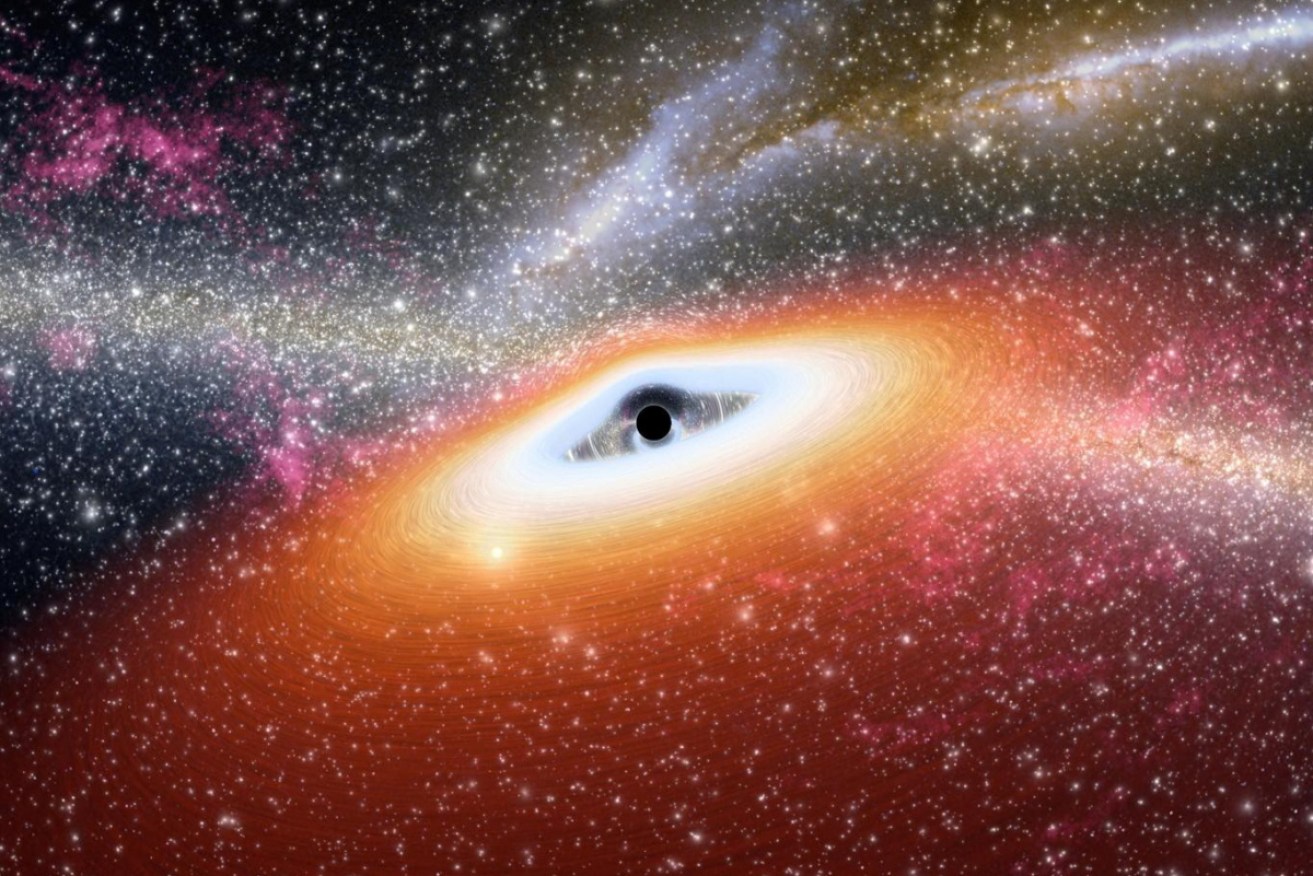Australian scientists find ‘Pac-Man’ black holes eating stars

Australian scientists were part of a team detecting collisions between giant stars and black holes. Photo: EPA
Australian scientists have helped find two massive star-eating black holes, which have been likened to the video game character Pac-Man.
An international team captured billion-year-old gravitational waves from the death spirals of collapsing supergiant stars as they collided with the black holes.
The observations will help unlock some of the most complex mysteries of the universe, including the building blocks of matter and the workings of space and time.
“These collisions have shaken the universe to its core and we’ve detected the ripples they have sent hurtling through the cosmos,” Australian National University astrophysicist Susan Scott said on Tuesday.
“Each collision isn’t just the coming together of two massive and dense objects.
“It’s really like Pac-Man, with a black hole swallowing its companion neutron star whole.”
One event included a black hole with a mass nine times bigger than our own sun and a neutron star with two times our sun’s mass.
The other included a black hole with about six times the mass of our sun and a neutron star with 1.5 times its mass.
They happened about a billion years ago but they were so massive scientists are still able to observe their gravitational waves today.
“These kind of detections are incredibly rare,” astrophysicist Johannes Eichholz said.
“These findings will have a profound impact on our understanding of the Universe for many years to come.”
The gravitational waves were recorded at the Laser Interferometer Gravitational-Wave Observatory in the US and the Virgo gravitational-wave observatory in Italy.
More than 1000 scientists were involved.
A black hole is a place in space where gravity pulls so much that even light can’t get out, according to NASA.
The gravity is so strong because matter has been squeezed into a tiny space.
The findings are published in The Astrophysical Journal Letters.
-AAP








